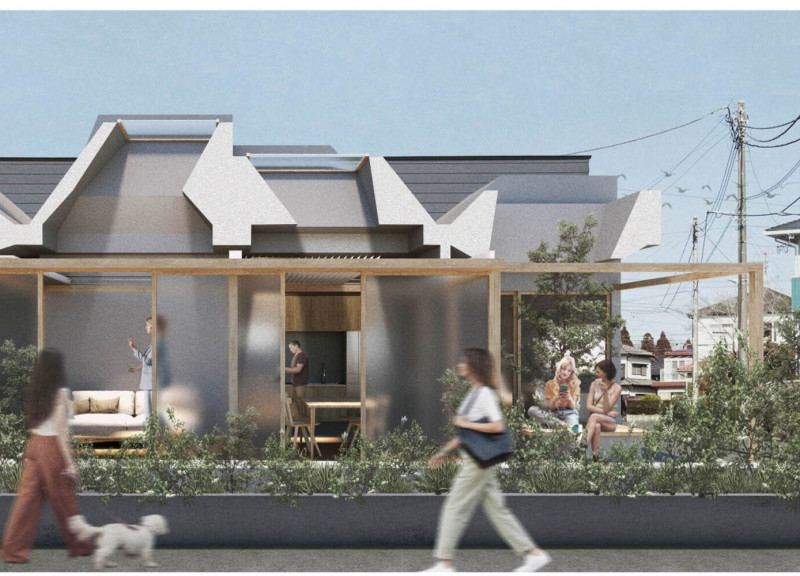5 key facts about this project
At its core, the project is designed to fulfill specific functions that cater to the needs of its users. Whether it is a public space, residential complex, or commercial building, the layout has been meticulously crafted to ensure a seamless flow of movement and interaction among its occupants. The architectural plans reveal an intentional organization of space that optimizes functionality while fostering a sense of community. The incorporation of communal areas encourages social engagement, which is vital in enhancing the overall user experience.
Materials play a central role in the architectural expression of this project, with a careful selection that underscores both quality and sustainability. The design utilizes elements such as reinforced concrete, glass, timber, and steel, which not only contribute to the structural integrity but also resonate with the surrounding environment. The use of glass allows natural light to penetrate deep into the interior, creating an inviting atmosphere. Timber accents bring warmth and a human touch, fostering an environment that feels both welcoming and connected to nature. The choice of materials is deliberate, aiming to reduce the ecological footprint and promote longevity.
A unique aspect of the project is its integration with the landscape. The architecture does not stand apart from its surroundings but rather engages with them, blurring the boundaries between built and natural environments. This symbiotic relationship is evident in the design of outdoor spaces that extend the interior experience. The seamless transition from inside to outside is emphasized through large open spaces, terraces, and green roofs, which not only enhance the aesthetic appeal but also contribute to the ecological sustainability of the project.
In terms of architectural ideas, this project stands out for its responsiveness to local climatic conditions. Features such as passive ventilation, strategic shading devices, and thermal massing strategies are fundamental in reducing energy consumption while maintaining comfort for the occupants. The design takes advantage of prevailing winds and sunlight patterns, demonstrating an intelligent approach to environmental context, which is crucial for long-term sustainability.
The creative approaches employed reflect a commitment to innovation within the architectural realm. The project does not merely aim to build but to create a lasting impact on the community it serves. By incorporating flexible spaces that can adapt to various uses over time, the design embodies the principles of resilience and multifunctionality, making it relevant not only for the present but adaptable for future needs.
The architecture illustrated in this project represents more than a mere construction; it is an embodiment of a vision that harmonizes social, environmental, and functional objectives. The thoughtfulness embedded in every aspect of the design invites users to engage with and embrace the space fully. To gain a more profound understanding of the meticulous considerations that shaped this project, the reader is encouraged to explore the architectural plans, sections, and designs in detail. By doing so, one can appreciate the nuanced architectural ideas that contribute to the project’s effectiveness and relevance in today's architectural discourse.























